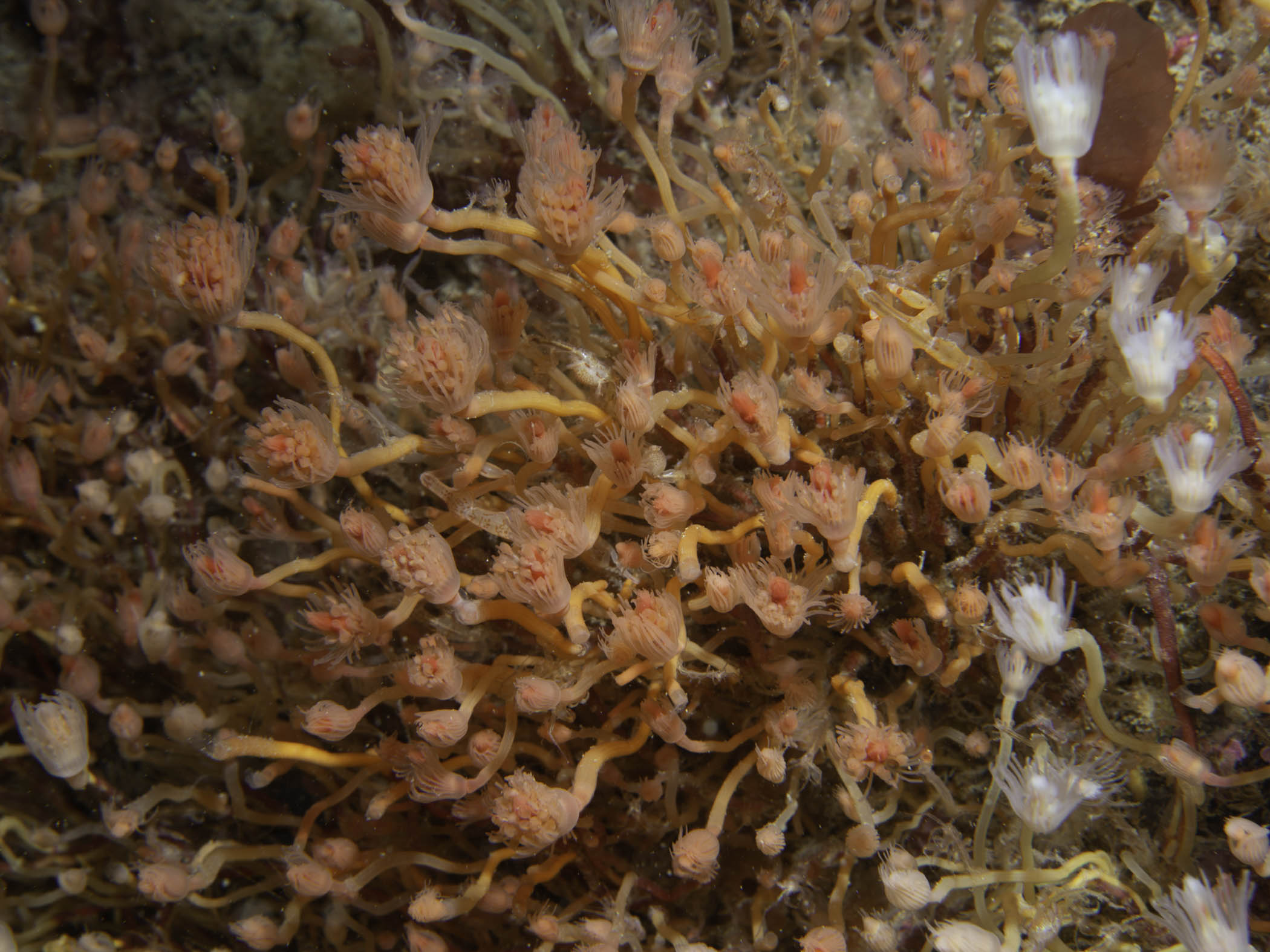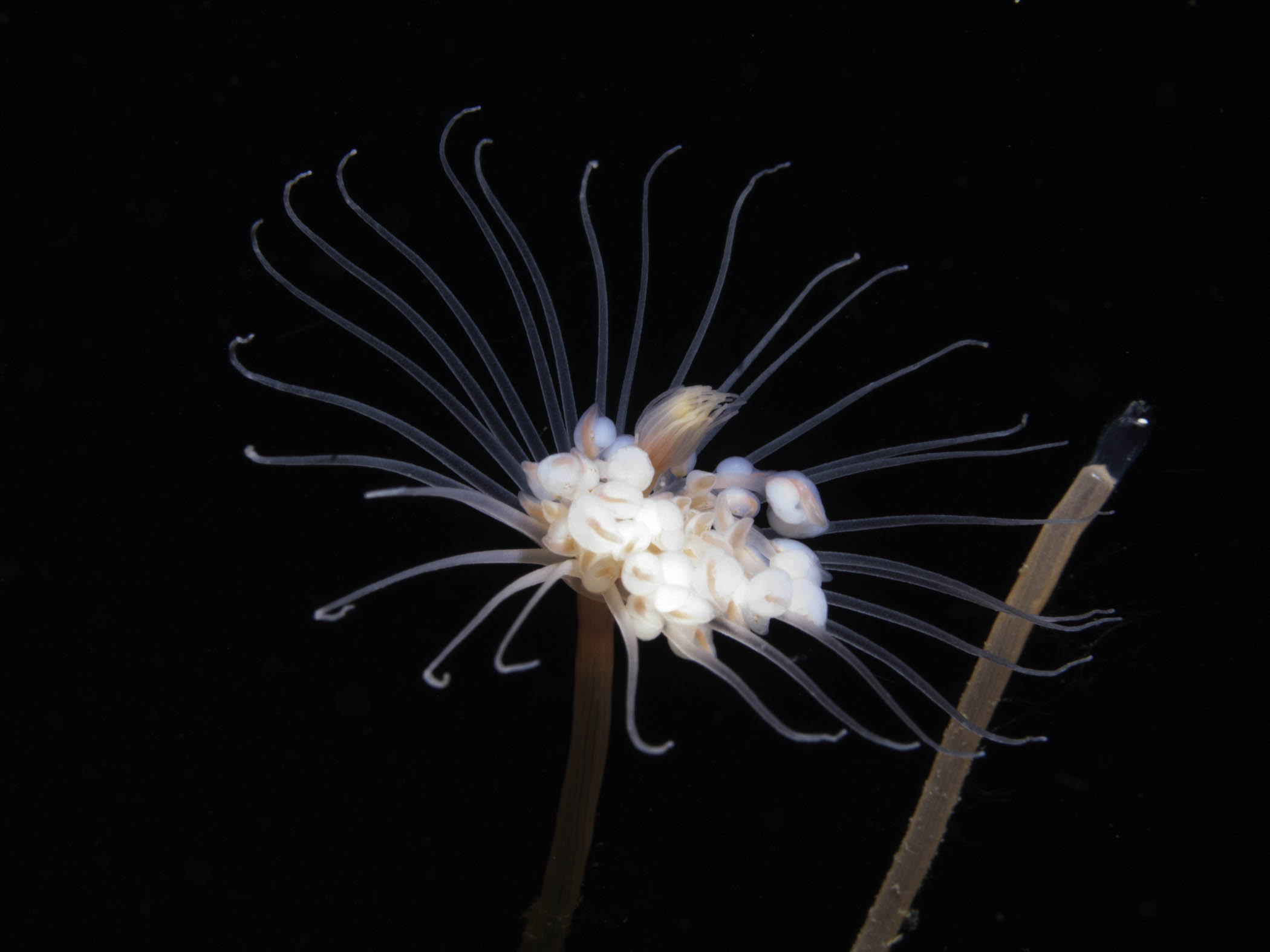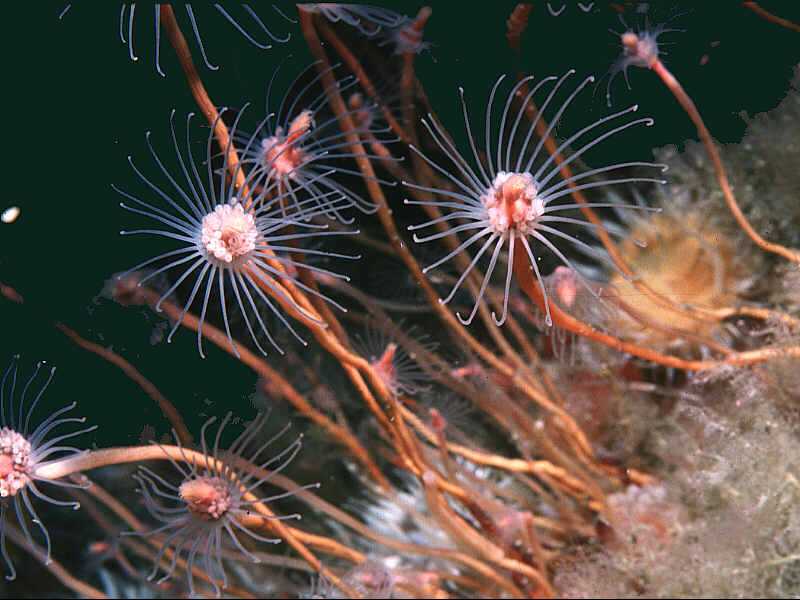| CNIDARIA : Anthoathecata : Tubulariidae | SEA ANEMONES AND HYDROIDS |
Tubularia indivisa Linnaeus, 1758
 |
| Tubularia indivisa |
Description: The stem of this hydroid has a tough, yellowish coloured tegument. Usually the stems are clustered together and fuse with each other towards the base of the colony. The polyp colour is pale pink through to red, and consists of a central circlet of oral tentacles surrounded by paler but larger aboral tentacles. Gonothecae arise within this inner set of tentacles. Overall height 100-150mm, diameter of the polyp and tentacles about 15mm.
Habitat: A characteristic species of current swept bedrock and boulders, which may attach to other substrata such as kelp stipes.
Distribution: This species is common on all coasts of the British Isles.
Similar Species: Could be confused with Ectopleura larynx.
Key Identification Features:
- Large polyps with an outer ring and inner cluster of tentacles, borne singly at the tip of tubular stems.
- Stems arise singly and unbranched from a clustered mass at the base, producing irregular, straggly colonies.
Distribution Map from NBN: Tubularia indivisa at National Biodiversity Network mapping facility, data for UK.
iNaturalist: Tubularia indivisa at iNaturalist World Species Observations database.
GBIF data for Tubularia indivisa
WoRMS: Tubularia indivisa at World Register of Marine Species. Accepted name: Tubularia indivisa Linnaeus, 1758. AphiaID: 117994.
Classification: Biota; Animalia; Cnidaria; Medusozoa; Hydrozoa; Hydroidolina; Anthoathecata; Aplanulata; Tubulariidae; Tubularia
| Previous species | Next species |
| Picton, B.E. & Morrow, C.C. (2024). Tubularia indivisa. Linnaeus, 1758. [In] Encyclopedia of Marine Life of Britain and Ireland. https://www2.habitas.org.uk/marbiop-ni/speciesaccounts.php?item=D1440. Accessed on 2025-04-10 |

